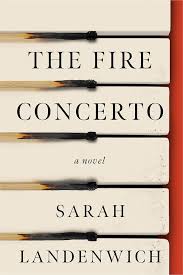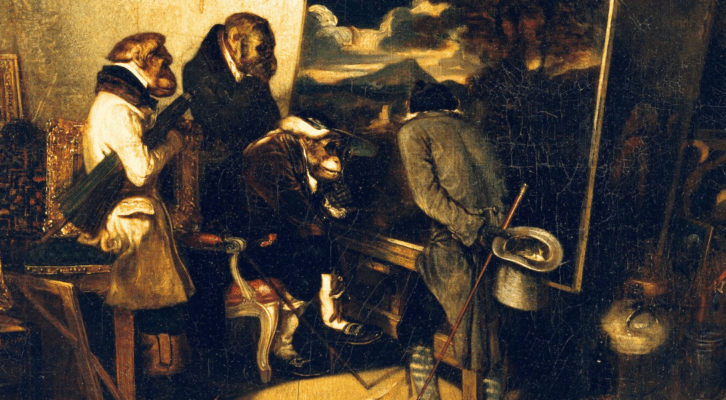I wrote a book about a brilliant female musician lost to history. Her name: Constantia Barnanowska Pleyel. Born into a musical family in Poland in the mid-nineteenth century, she was recognized as a musical genius early in life and became, by cultivation of her domineering father, a piano prodigy who toured the concert halls of Europe. She was an iconoclast, an odds-beater, the rare female performer-composer of her time. Then tragedy struck: she broke four fingers of her hand. In the nineteenth century, this was a career-ending injury. She was twenty-one years old, newly married. She had, as they say, her whole life in front of her, but now she had to live it without the thing she loved most.
What she did next surprised almost no one: she fell into despair. Her mental health was questioned. Desperate to gain back her abilities, she enlisted the help of a composer, a famous but mercurial genius who claimed he could help rehabilitate her hand. Despite his reputation as an angry and abusive man, she agreed to work with him. She endured him until one day she could not. She said the murder was self-defense, but no one believed her. She was an unstable woman, after all, beset by jealousy, unhinged by trauma. Her crime became her biography.
Now for the spoiler: Constantia Pleyel is a fiction. A woman by that name never lived, though if you thought until this moment that she was real, you would be in the company of many readers who have believed the great murderess of my novel, The Fire Concerto, once lived and breathed (and killed). This is not so much a credit to me as a writer as it is to the history that inspired her. Like so many fictional lives before hers, Constantia Pleyel’s was drawn from real women of the nineteenth century, women whose names and stories are now footnotes in the histories of the more-famous men they knew.
The Polish soprano Constantia Gładkowsa, from whom my character received her first name, was renowned for both her vocal talent and her beauty. She attended the Warsaw Conservatory at the same time as the composer Frédéric Chopin. She is now remembered primarily for being briefly engaged to him.
Marie Moke Pleyel was a virtuosa pianist. Her musical gifts earned her the dedication of Chopin’s Op. 9 Nocturnes, and she later became a teacher at the Brussels Conservatory. Yet she is known mostly for her associations with the men in her life. Once engaged to the composer Hector Berlioz, she caused a great kerfuffle when she jilted him to marry instead the rich piano manufacturer Camille Pleyel. Later, she had an affair with Franz Liszt. These relationships are the primary touchpoints of her biography. The final sentence of her brief entry in the Encyclopedia Britannica reads thus: “Her few compositions for piano are of minor importance.”
Then there’s Tekla Bądarzewska-Baranowska, one of the few female composers of the nineteenth century who achieved popular success in her lifetime, but whose work was excoriated by male music critics. Her most famous piece, “The Maiden’s Prayer,” written when she was just eighteen and published in 1856, became an international sensation. Yet almost immediately, and for more than a century thereafter, her work was derided by men who considered it inferior and inept, popular trash. Bądarzewska died tragically young, at age 23. In an obituary, a critic wrote that “early death saved the musical world from a veritable inundation of intolerable lachrymosity.”
There are a few female musicians from the nineteenth century who are remembered better. A name you may recognize is Fanny Mendelssohn Hensel, though you’re probably more familiar with her younger brother, Felix. He was her closest confidant; she was his greatest champion. And yet, until the very end of her too-short life, he discouraged her from publishing her virtuosic compositions. Her place, he thought, was in the home with her children. Similarly, many music enthusiasts may have heard of Clara Schumann, a pianist and composer whose musical achievements are beyond mythic when we consider what she was up against: pervasive sexism, money troubles, the death of multiple children, an insane husband. Still, her husband Robert is, by far, the more-famous Schumann of the two.
You see, the real truth behind my character Constantia Pleyel and every female artist, musician, and writer of the nineteenth century was their struggle to create, and to do so despite self-doubt, family pressure, public derision, and the belief that they didn’t belong.
Why does this matter, when the greatest music superstars of our own day are Beyoncé and Taylor Swift? Ask the women in your own family, the older ones, who knew the even older ones who have passed on. What passions did they surrender to make a life in this world? What dreams were quashed, either forcibly by a parent or husband, or more gradually, by a slow undermining of confidence and opportunity? What instruments or art supplies were sold to pay the mortgage or buy baby clothes, or passed on to a child with greater freedom to dream?
My husband’s grandmother, a woman beloved by all who knew her, lived until she was ninety-four. Born in 1928, she grew up in a time when a cart delivered hunks of ice for people’s iceboxes. She saw the Great Depression, lived through the polio epidemic and World War II, and worked in a munitions factory during the Korean War. A lifelong music lover, she attended college on a music scholarship, and had a radio show at the university called “Miriam Sings.” She was also a violinist. Her children have vague memories of hearing her play when they were young, but by the time my husband was born in 1983, Miriam no longer even owned a violin. Like many women of her time, she abandoned her artistic pursuits to raise her family.
The year before her death, she revealed to my husband that a lifetime ago, she had played in the Kansas City Orchestra. That’s how good she had been. What had this meant to her, that she was talented enough to achieve this level of accomplishment, and then had to let it go? None of us will ever know.
***


















